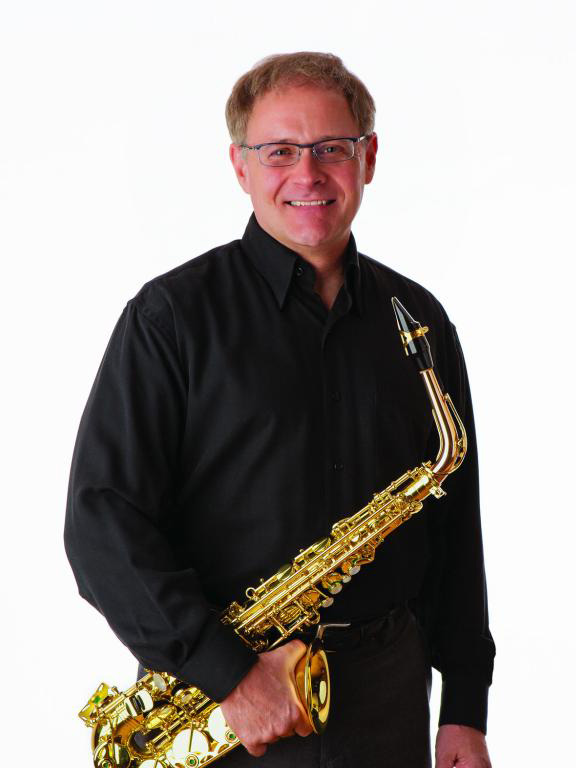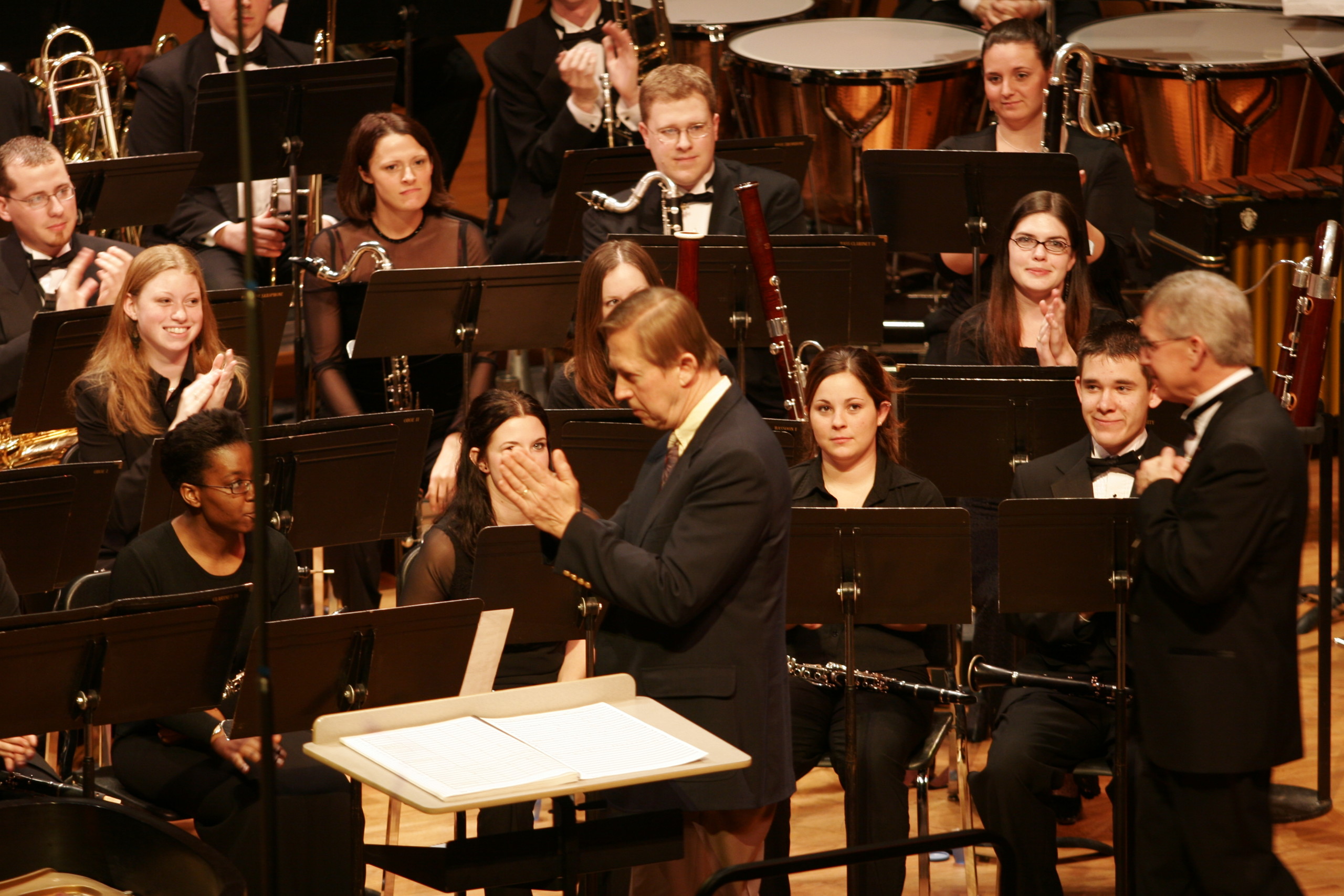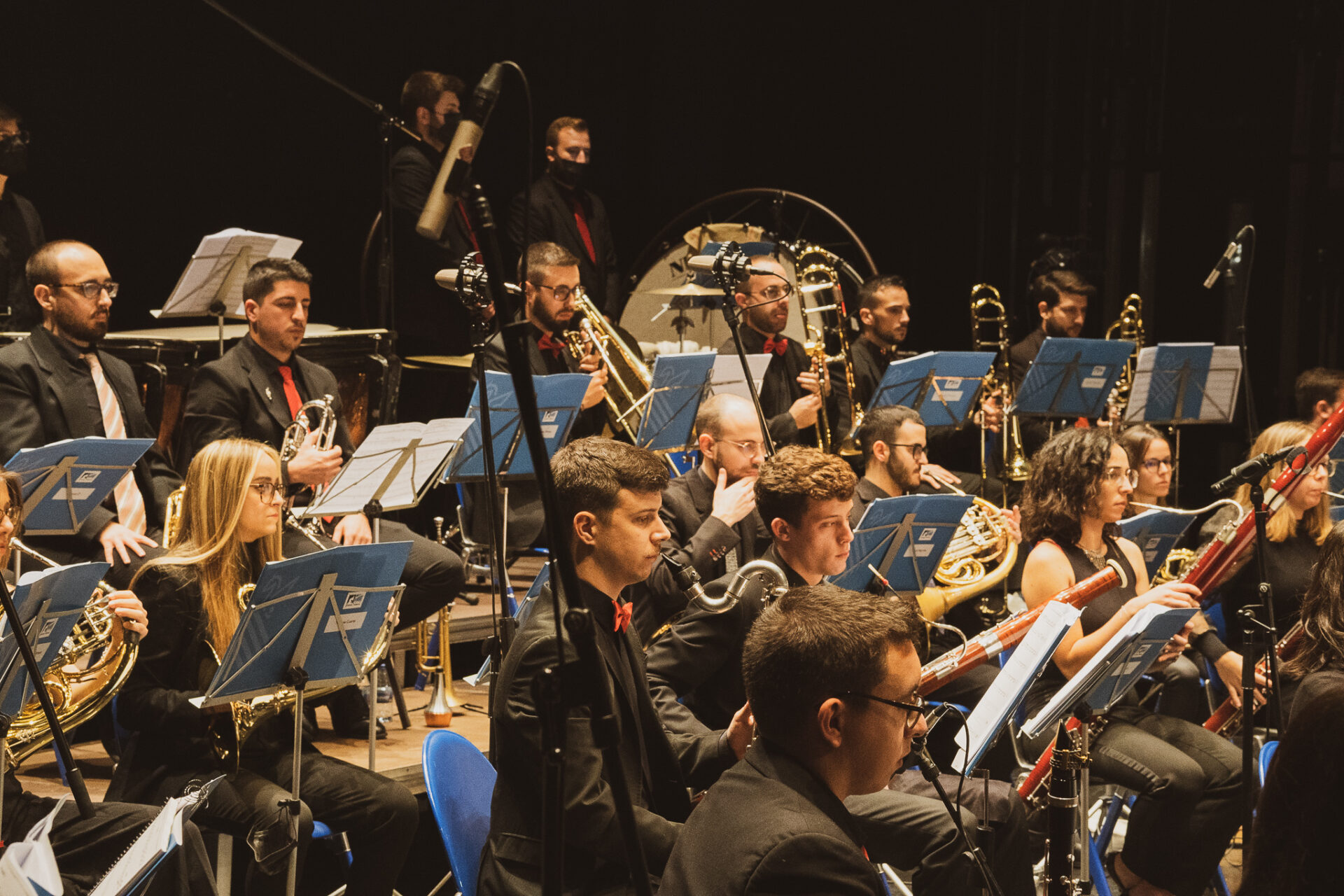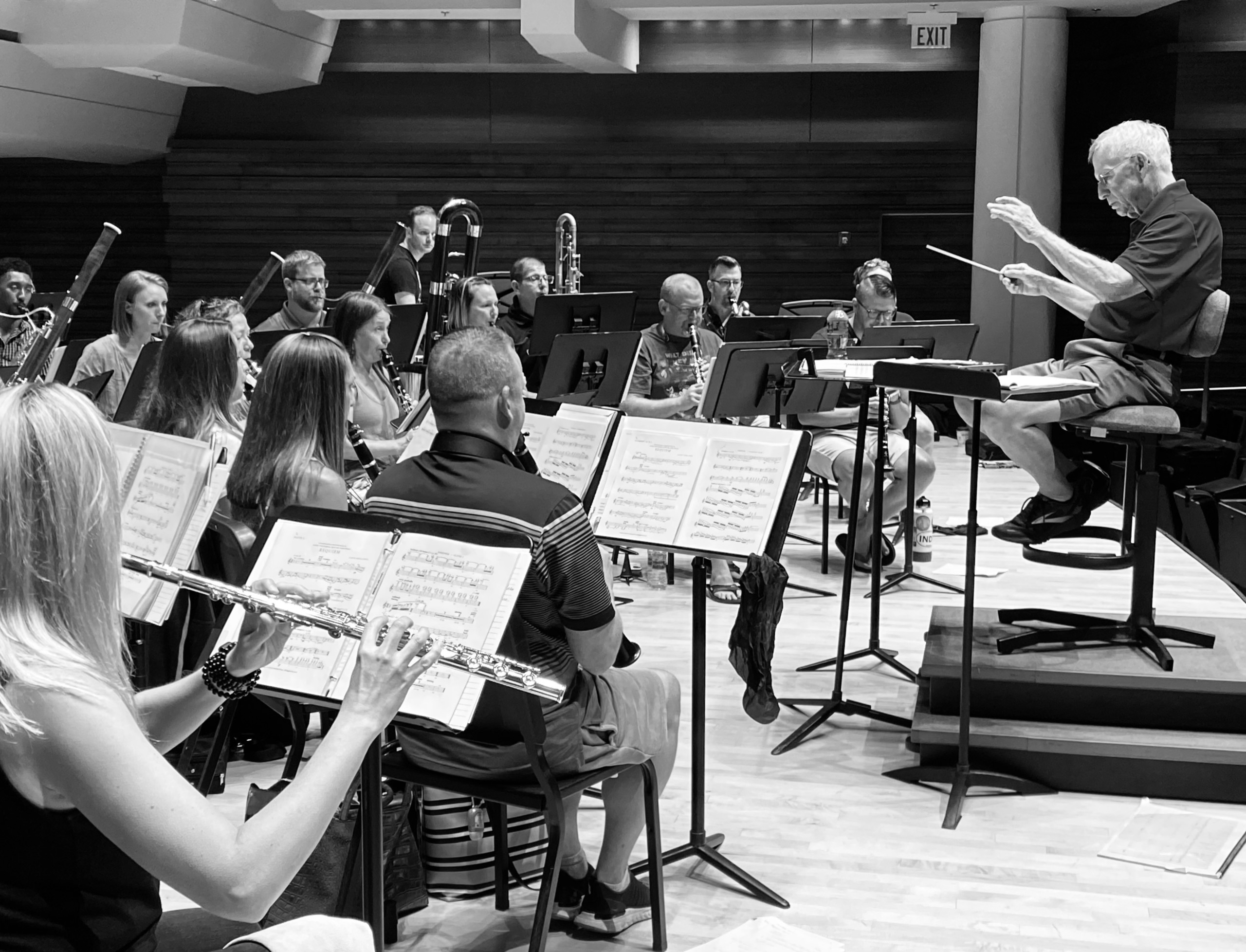Maslanka Weekly highlights excellent performances of David Maslanka’s music from around the web.
Last week Maslanka Weekly featured a selection of David’s compositions that referenced rivers. In looking at much of David’s music, the symbol of water seems to be a reoccurring theme. David often referred to water as “a cleansing and life-giving power.” This week, we continue to look at more of David’s music that uses water as a symbol or motif: A Child’s Garden of Dreams, Sea Dreams: Concerto for Two Horns and Wind Ensemble, and UFO Dreams: Concerto for Euphonium and Wind Ensemble, Movement I – “The Water is Wide.”
A Child’s Garden of Dreams
From David’s Program Note:
A Child’s Garden of Dreams was commissioned by John and Marietta Paynter for the Northwestern University Symphonic Wind Ensemble. It was composed in the summer of 1981 and premiered by Northwestern in 1982.
The following material is from Man and His Symbols by Carl Jung:
A very important case came to me from a man who was himself a psychiatrist. One day he brought me a handwritten booklet he had received as a Christmas present from his ten-year-old daughter. It contained a whole series of dreams she had had when she was eight. They made up the weirdest series of dreams I had ever seen, and I could well understand why her father was more than just puzzled by them. Though childlike, they were uncanny, and contained images whose origin was wholly incomprehensible to the father….
In the unabridged German original, each dream begins with the words of the old fairy tale: “Once upon a time….” By these words the little dreamer suggests that she felt each dream were a sort of fairy tale, which she wants to tell her father as a Christmas present. The father tried to explain the dreams in terms of their context. But he could not do so because there appeared to be no personal associations with them….
[The little girl] died of an infectious disease about a year after that Christmas….”[The dreams were a preparation for death, expressed through short stories, like the tales told at primitive initiations.]
The little girl was approaching puberty and at the same time, the end of her life. Little or nothing in the symbolism of her dreams points to the beginning of a normal adult life…. When I first read her dreams, I had the uncanny feeling that they suggested impending disaster….
These dreams open up a new and rather terrifying aspect of life and death. One would expect to find such images in an aging person who looks back upon life, rather than to be given them by a child…. Their atmosphere recalls the old Roman saying, “Life is a short dream,” rather than the joy and exuberance of its springtime…. Experience shows that the unknown approach of death casts an adumbratio (an anticipatory shadow) over the life and dreams of the victim. Even the altar in Christian churches represents, on the one hand, a tomb, and on the other, a place of resurrection – the transformation of death into eternal life.”
I have selected five of the twelve dreams as motifs for the movements of this composition:
- There is a desert on the moon where the dreamer sinks so deeply into the ground that she reaches hell.
- A drunken woman falls into the water and comes out renewed and sober.
- A horde of small animals frightens the dreamer. The animals increase to a tremendous size, and one of them devours the little girl.
- A drop of water is seen as it appears when looked at through a microscope. The girl sees that the drop is full of tree branches. This portrays the origin of the world.
- An ascent into heaven where pagan dances are being celebrated; and a descent into hell where angels are doing good deeds.
Watch below as Richard Strauch leads the Whitworth Wind Symphony in a dazzling performance of this music.
More info
- Richard Strauch
- Whitworth Wind Symphony
- A Child’s Garden of Dreams @ davidmaslanka.com
Sea Dreams: Concerto for Two Horns and Wind Ensemble, Movement I
From David’s Program Note:
I was born and raised in New Bedford, Massachusetts, the whaling port of Herman Melville’s Moby Dick. The sea has been a part of me forever. I was riveted by Moby Dick when I first read it at age fifteen. The mundane aspects of the book – the pictures of the varying ocean moods, the minute descriptions of the ship and of whaling gear – sprang to life for me as powerfully as the titanic struggles with the white whale. Since my youth, other stories of Melville, and among other things the paintings of Winslow Homer, and the sea imagery in the poetry of Pablo Neruda have opened me in the same way.
In my meditation life, sea imagery has played a central role for years. The sea is the dream image of the unconscious; the seashore the connecting point to conscious mind. I have grown up through the images of my inner sea.
As I began to think deeply about the concerto for two horns, powerful images of the sea began to rise one more time. From my meditation journal I have made a selection of images which moved me in the writing of this piece. They are not a story or an explanation; rather, a mosaic of moods and feelings that directly underlie the composition of this music.
I come to the sea shore. At the base of the cliff next to the sea is the long grey canoe of death. The ocean is grey, still, misty. The canoe is narrow with square ends. Two shrouded figures stand in it.
A huge boulder knocks me into the ocean. I sink with it. On the bottom it opens and life rises from it. Out in the air the life takes the form of a large diamond through which streams brilliant light.
I am at the seashore with the overturned wreckage of a whaler’s harpoon boat. There are dead bodies. One is my friend. He is young, with dark curly hair, well-formed, nice looking – and dead. I cry for him. There is a lot of death to cry for. Then I release him as part of the cycle of life and death. I think of Neruda and The Captain’s Verses ocean poems, and I ache for the sea. I sense that there is still in me much to cry for concerning the ocean. I sense an ocean flow that wants to be expressed in music.
Two people set out in a small slender boat on an ocean journey. It is dark. They are wearing long black robes. The ocean ahead is choppy. The night sea journey begins with apprehension.
My mind opens suddenly to the great ocean storm. I see first the ship’s mast with flying pennant at the top. There are great heaving seas. The ship capsize.s but first rises and slants so sharply that everything and everyone on deck is dumped into the ocean. I see the huge wave depression opening in front of me and experience the terror and panic of going into the icy sea water. This is death.
The Concerto is in three movements. The first is a double movement with a very serious and intense opening, and a released and joyous conclusion. The opening depicts the great ocean storm and the conclusion joy in deliverance.
At the beginning of the second movement, I have written in the score the words “moonlight on the quiet sea.” It is a time to reflect upon and absorb the fierce emotions of the first movement. It is personal thought and the opening of oneself to another. There is the understanding that in this life we are for the other.
The third movement parallels the structure of the first. The opening, like its counterpart, is serious and intense – a message from the heart. Its conclusion is a rousing dance music.
Throughout the Concerto there is the sense of transformation at work: the movement through terror, loss and death to an exhilarated joy in life.
Watch below as Stephen K. Steele leads Nancy O’Neill (Horn), Saul Garland (Horn), and the Illinois State University Wind Symphony in a rousing performance of Movement I.
More info
- Stephen K. Steele
- Illinois State University Wind Symphony
- Sea Dreams: Concerto for Two Horns and Wind Ensemble @ davidmaslanka.com
UFO Dreams: Concerto for Euphonium and Wind Ensemble
From David’s Program Note:
In brass-player slang, the euphonium is the “eupho.” I have punned this into “UFO,” giving it an altogether different twist. I wanted to throw our “life-on-earth” experience into sharp relief by suggesting a cosmic origin and connection for the human spirit. In any case, my son Matthew, for whom this piece was written, is convinced that I am from another planet!
The concerto is in the traditional three movements. The first is based on the English folk song “The Water is Wide.” This is a beautiful song that my wife used to sing to the children when they were very young. The movement consists of two sets of variations on the melody, separated by a central digression. The second movement – “Home Planet – Who are you? Where do you come from?” – is a dream of distant origins. My choice of this title is still a mystery to me, but it feels quite right. The last movement is again a set of variations, this time on a melody from the Bach Chorale book. The title of the tune is “Aus meines Herzens Grunde” (“From the Bottom of My Heart”). The music is bold and spirited, and expresses my wish for Matthew’s life and cosmic journey.
Watch below as Scott Hagen leads Adam Frey and the University of Utah Wind Ensemble in a spectacular performance of Movement I, “The Water is Wide.”
More info
- Adam Frey
- Scott Hagen
- University of Utah Wind Ensemble
- Golden Light @ davidmaslanka.com
We would love to hear from you! If you know of any outstanding performances of David Maslanka’s music on the web, please email us at maslankaweekly@maslanka.org.





